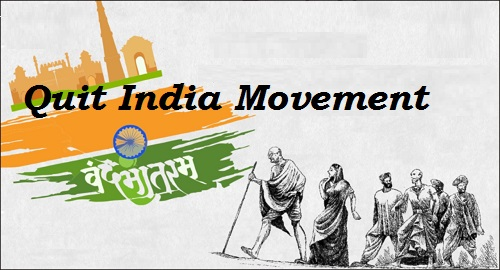Posted by
The Open Page |
08/8/2019

On 8 August 1942 at the All-India Congress Committee session in Bombay, Mohandas Karamchand Gandhi launched the 'Quit India' movement. The next day, Gandhi, Nehru and many other leaders of the Indian National Congress were arrested by the British Government. Disorderly and non-violent demonstrations took place throughout the country in the following days.
By the middle of 1942, Japanese troops were approaching the borders of India. Pressure was mounting from China, the United States and Britain to solve the issue of the future status of India before the end of the war. In March 1942, the Prime Minister dispatched Sir Stafford Cripps, a member of the War Cabinet, to India to discuss the British Government's Draft Declaration. The draft granted India Dominion status after the war but otherwise conceded few changes to the British Government Act of 1935. The draft was unacceptable to the Congress Working Committee who rejected it. The failure of the Cripps Mission further estranged the Congress and the British Government.
Gandhi seized upon the failure of the Cripps Mission, the advances of the Japanese in South-East Asia and the general frustration with the British in India. He called for a voluntary British withdrawal from India. From 29 April to 1 May 1942, the All India Congress Committee assembled in Allahabad to discuss the resolution of the Working Committee. Although Gandhi was absent from the meeting, many of his points were admitted into the resolution: the most significant of them being the commitment to non-violence. On 14 July 1942, the Congress Working Committee met again at Wardha and resolved that it would authorise Gandhi to take charge of the non-violent mass movement. The Resolution, generally referred to as the 'Quit India' resolution, was to be approved by the All India Congress Committee meeting in Bombay in August.
On 7 to 8 August 1942, the All India Congress Committee met in Bombay and ratified the 'Quit India' resolution. Gandhi called for 'Do or Die'. The next day, on 9 August 1942, Gandhi, members of the Congress Working Committee and other Congress leaders were arrested by the British Government under the Defence of India Rules. The Working Committee, the All India Congress Committee and the four Provincial Congress Committees were declared unlawful associations under the Criminal Law Amendment Act of 1908. The assembly of public meetings were prohibited under rule 56 of the Defence of India Rules. The arrest of Gandhi and the Congress leaders led to mass demonstrations throughout India. Thousands were killed and injured in the wake of the 'Quit India' movement. Strikes were called in many places. The British swiftly suppressed many of these demonstrations by mass detentions; more than 100,000 people were imprisoned.
The 'Quit India' movement, more than anything, united the Indian people against British rule. Although most demonstrations had been suppressed by 1944, upon his release in 1944 Gandhi continued his resistance and went on a 21-day fast. By the end of the Second World War, Britain's place in the world had changed dramatically and the demand for independence could no longer be ignored.
Read Full Post »